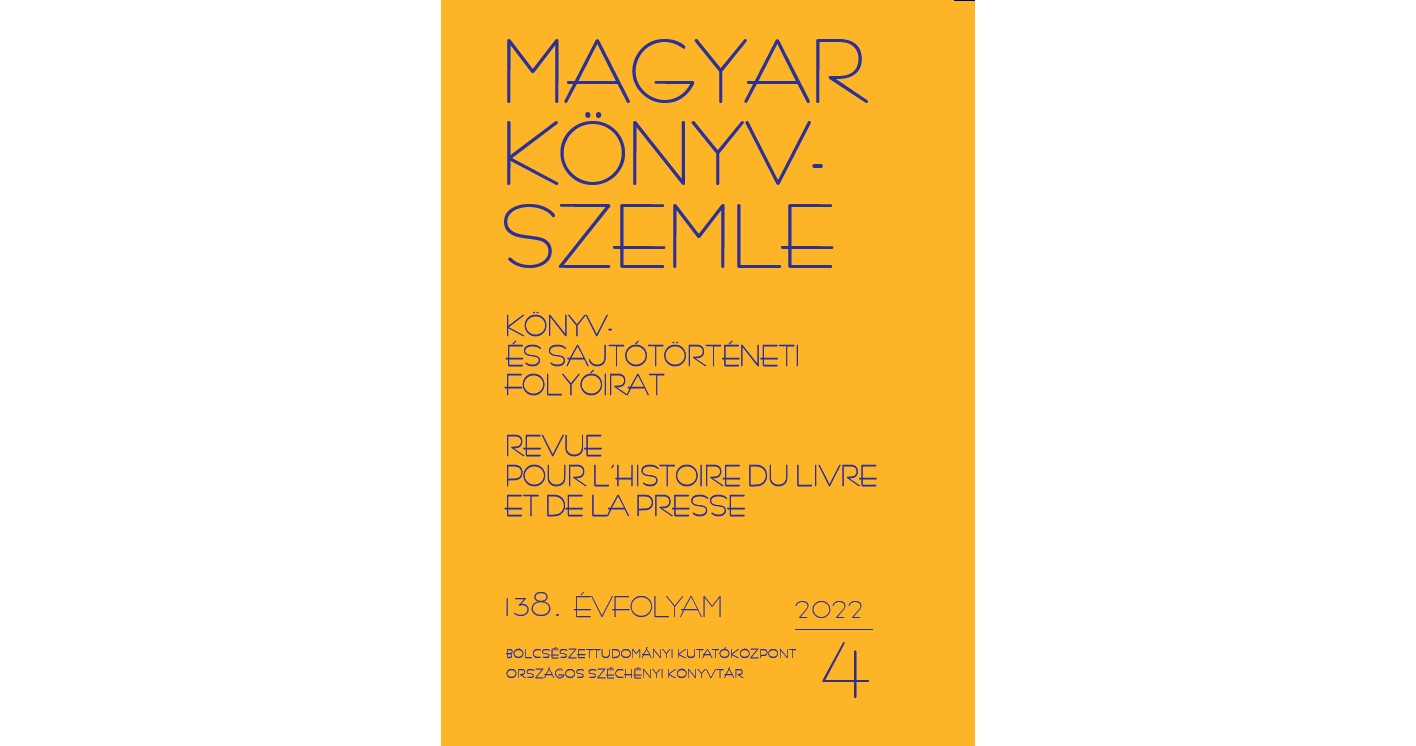Printed Books from the late 17th-Century Library of the Chapter and the Cathedral of Zagreb in Croatian and Hungarian Collections
Results of Research into a Special Type of Book Binding (“Mikulić Binding”)
Abstract
The old printed books of the historic library of Zagreb cathedral (today housed in the Metropolitanska knjižnica u Zagrebu or Metropolitan Library, Zagreb) were given a special kind of binding around 1692. The bookbinder glued onto the covers of the printed books pieces of medieval parchment codices in a very special way. The binding that resulted (generally referred to as “Metropolitanski uvez” or “Metropolitan binding” in the Croatian literature on the subject) resembles half-leather binding, the crucial difference being that, with the books of the cathedral, parchment was used instead of paper. Around 1692, when Aleksandar Mikulić, the bishop of Zagreb (1688–1694), had a new building erected for the cathedral library, between 2000 and 3000 books were bound in this particular way, to safeguard the printings.
In this paper, I give a detailed description of this special type of binding and also survey the history of the cathedral library. Between 1692 and 1846, when Zagreb canons were allowed under strict conditions to borrow books from the collection, several volumes went their way. According to present knowledge, outside the Metropolitanska knjižnica, at least 5 libraries in Croatia and 3 in Hungary have preserved altogether 70 books bound in this way. For this reason, I introduce a new term for the type of binding, namely “Mikulić binding”, as the majority of the books kept outside the Metropolitanska knjižnica were never stored in this modern collection, but in the library of Zagreb cathedral, which had existed only until 1906.
I give a short history of the collections where books bound in this way are preserved; publish detailed bibliographical descriptions of the volumes in question; identify the manuscripts found on the bindings; and try to reconstruct the itinerary of the books with the help of the possessors’ notes. I was finally able to identify 21 codices surviving on bindings in either a small or relatively large number of fragments; these manuscripts had been used as raw material by the 17th-century bookbinder working at Zagreb. One of these manuscripts is the 13th-century notated breviary of Esztergom (Strigonium), which was identified in 258 fragments on bindings in the Metropolitanska knjižnica in 2019. My recent research has discovered 14 further fragments taken from this invaluable codex.



